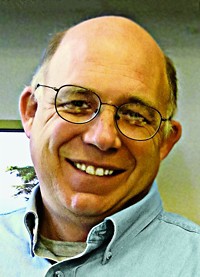Advertisement
Grab your lab coat. Let's get started
Welcome!
Welcome!
Create an account below to get 6 C&EN articles per month, receive newsletters and more - all free.
It seems this is your first time logging in online. Please enter the following information to continue.
As an ACS member you automatically get access to this site. All we need is few more details to create your reading experience.
Not you? Sign in with a different account.
Not you? Sign in with a different account.
ERROR 1
ERROR 1
ERROR 2
ERROR 2
ERROR 2
ERROR 2
ERROR 2
Password and Confirm password must match.
If you have an ACS member number, please enter it here so we can link this account to your membership. (optional)
ERROR 2
ACS values your privacy. By submitting your information, you are gaining access to C&EN and subscribing to our weekly newsletter. We use the information you provide to make your reading experience better, and we will never sell your data to third party members.
Biological Chemistry
The Sweet Research Life at Novartis
In a converted candy factory, the pharmaceutical giant is transforming drug discovery
by CELIA M. HENRY, C&EN WASHINGTON
July 11, 2005
| A version of this story appeared in
Volume 83, Issue 28

Since April 2004, the headquarters for the Novartis Institutes for BioMedical Research (NIBR) has been operating in the converted candy factory that was once home to New England Confectionary Co., the makers of NECCO wafers. It took almost two years to transform the space at 250 Massachusetts Ave. in Cambridge, Mass., to a state-of-the-art research facility. The physical surroundings aren't the only thing that has gotten a major overhaul. Novartis is similarly transforming its approach to drug discovery.
The move to Cambridge signaled more changes to come. Not only was Novartis relocating its U.S. research operations from New Jersey to Cambridge, it was also moving the worldwide headquarters for NIBR from Basel, Switzerland. Mark Fishman, formerly a professor at Harvard Medical School, became the president of NIBR, bringing with him a patient-focused vision for drug discovery. In addition, the company fosters a collaborative environment where chemistry is central.
According to the patient-focused vision, scientists are encouraged to focus on unmet medical needs rather than on the market, the assumption being that success will naturally follow. That focus is manifested by the addition of a group of physician-scientists to the research team in Cambridge. Headed by Trevor Mundel, this "translational medicine" group is officially part of the development portion of the company, but its members are seamlessly incorporated into the research team so that they can influence the early discovery phase as well as the development phase. Fishman "doesn't want these people being consultants pulled in at the last stage," Mundel says. "He wants them to be influential even at the point where we decide what we're going to do right at the get-go. It's no use even working on a target if there are some reasons downstream that this is never going to work."
Novartis has spent nearly two years assembling a team of physician-scientists to work in research. "People with both of these skills are very rare," Mundel says. "You can count the number of candidates that we have in each therapy area on the fingers of one hand."
Novartis prides itself in providing its physician-scientists and all other researchers with a collaborative research environment in which ideas can come from anywhere--management or the scientists. "We have built a research organization that combines the best and the brightest from biotech, pharma, and academia. This mixing of experiences, approaches, and ideas is a large part of what makes the culture here so dynamic and exciting," Fishman says.
Scott Biller, head of global discovery chemistry, says: "There's an organizational drive for people to work together in cross-functional groups. We encourage people to come up with ideas and get programs going."
For Biller, that attitude means that he was free to change how the company identifies which compounds are going to move forward into development, and he spearheaded a new candidate selection process that involves the development team much earlier than before.
A representative from development serves on each project team from the very beginning, and the role of that representative expands as a compound moves closer to becoming a drug candidate. By the time a compound enters the candidate selection process, the scientists from development are as heavily involved as those from discovery. "Our goal is to have better candidates without slowing the process down," Biller says. "If you just focus on speed, quality typically suffers, and you ultimately slow everything down."

ALWAYS IMPORTANT in the pharmaceutical industry, chemistry forms the very heart of all stages of discovery research at Novartis. Even the biological research to better understand disease has a strong chemical component. Working at the interface of chemistry and biology is "exhilarating," Fishman says. "This is relatively uncharted space."
The chemistry team at Cambridge has been expanding rapidly, from a core of about 65 chemists from the U.S. operations in New Jersey to, if all goes as planned, 200 by the end of this year. "I was intimidated by the challenge facing me when I took the job," Biller says, "but we instituted an aggressive recruiting campaign as well as a robust university relations program, both of which are paying off."
The company has tapped into its academically rich environment, with 50% of the new chemistry hires coming from the area. "Just being up here in Cambridge has been a tremendous advantage, because there are so many universities here that have top chemistry departments. People--especially students--love this place," Biller says.
New Ph.D.s and recent postdocs are especially attractive because they have the latest skill sets and are at the peak of their excitement about science, but "they are not drug hunters yet," Biller says. "Drug discovery is something you learn only on the job."
To make sure there are sufficient numbers of experienced researchers, Novartis also seeks people with experience in biotech or pharma. People from biotech may be more entrepreneurial and require less infrastructure, whereas those from pharma are more likely to have experience getting a drug into development. "We're looking for a specific profile, a specific type of person," Biller says, and Novartis will hire them whatever their background.
One new group within chemistry exemplifies how Novartis is using chemistry in new ways to understand biology. This group, headed by John A. Tallarico, a former Harvard Medical School researcher, uses chemogenomics and chemogenetics--the use of small-molecule probes to uncover biological function--to study targets and understand disease biology. Such research is "the most basic of basic discovery," Tallarico says.
On the basis of Novartis' classification of discovery research along a continuum from D0 to D3, from the basic pie-in-the-sky projects to those that are just about ready to be transitioned into development, Tallarico jokes that his group's research is so fundamental that it should be called D minus 1.
"A lot of our research is technology oriented to help us address basic biological questions," he says. His group especially focuses on using small molecules in phenotypic cell-based assays that mimic the disease or biological pathway they are trying to understand. "We screen small molecules to see if we can turn the pathway on or off specifically," Tallarico says. They have the entire Novartis archive of more than a million compounds to use in their screens.
BUT KNOWING that a molecule switches a pathway on or off is only the first step. What they really want to know is how the molecule does it. To find out, Tallarico's group closely collaborates with a biology group called the developmental and molecular pathways group, headed by Jeff Porter. The biology group develops the assays, and the chemogenetics group provides all the chemistry support for the screens and for identifying targets and mechanisms of action.
"In building the department, we've ensured that we have access to chemistry at a much earlier phase than would normally be allocated in the drug discovery process at Novartis," says Daniel Curtis, a senior research investigator in the pathways group. The chemistry collaboration is vital for determining how a molecule is acting within a cell. The researchers iteratively optimize molecules that are then used to fish target proteins out of the cell. Afterward, those proteins could turn into the focus of drug discovery efforts themselves, or they could become the conceptual basis of a new pathway-based screen.
Tallarico and Curtis are focusing on some of the fundamental signaling pathways involved in development, Curtis says. People have shied away from such pathways as drug targets because of their importance in normal development, but these pathways are also implicated in disease states. "It's a little bit daring for us to take them on directly," Curtis says. The hope is to find therapies that affect diseases without disrupting normal development.
Defining success in such research is a challenge. "We're struggling with what is a successful result," Tallarico says. "Novartis is structured by disease areas. If we stimulate activity around a drug discovery project in one of those disease areas, I think that would be a great success for us."
Another area that Novartis is trying to reinvent is computer-aided drug discovery. "As modelers, we're an integral part of the drug discovery team," says John Van Drie, director of computer-aided drug discovery at the Cambridge facility. Each drug discovery project team includes a modeling representative, and the modelers are still trying to determine what phases of the process they can impact.
Van Drie's group can get involved before the first laboratory experiments are even done. In one project, for example, they are using a model of a receptor to screen virtually all the compounds in Novartis' collection. "We're getting involved before the high-throughput screening is even up and running to try to jump-start that project," he says. "Hopefully, we'll have a chemical starting point before the project has even completed a high-throughput screen."
At later stages of projects, Van Drie's team will model how a drug is processed by the body, so-called ADME/Tox (absorption, distribution, metabolism, elimination, and toxicity) modeling.
"Let's suppose there's a molecule that has all the attributes we want except for one. There's one wart in this molecule," Van Drie says. They will build models based on the data in hand and suggest steps that can be taken "to fix that one final attribute" before the molecule advances.
Modelers can be involved anywhere there's a "fork in the road," Van Drie says, helping to decide which molecule to synthesize or which of several paths to take. "We probably have our greatest impact in pointing out paths that people hadn't even been looking at--potential classes of molecules that they hadn't even been considering, potential strategies toward approaching the problem that they hadn't even thought about."
Biller is satisfied with what the wide-ranging chemistry group has accomplished so far, and he hopes that the transformation will never end. "The key thing to staying competitive is to continue to evolve the way you do things. If you stand still, somebody else is going to blow by you," he says. "You always need to be looking at how you do things and seeing how you can do them better."





Join the conversation
Contact the reporter
Submit a Letter to the Editor for publication
Engage with us on Twitter